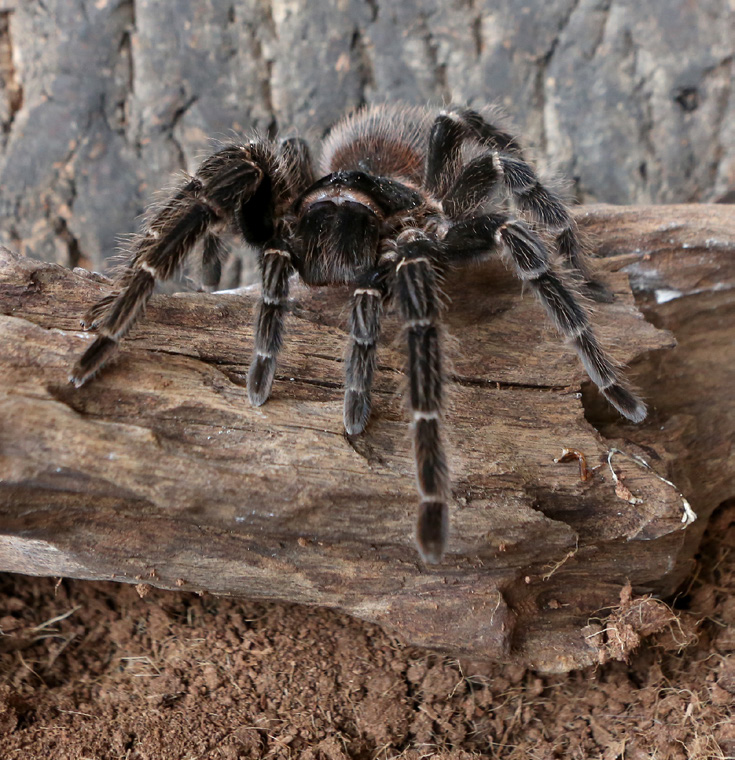What you should know about the Lasiodora parahybana or salmon pink bird eater
Often seen at exotic shows with many people gathered around its enclosure, the Lasiodora parahybana is a large tarantula species; thus it comes as no surprise that it requires more space.
The first surprise about the Lasiodora parahybana is that it does not eat birds! It’s too much work for an opportunistic predator, for whom the quantity of food eaten per day is very important.
What few new enthusiasts realize they should consider when keeping this species is that the Lasiodora parahybana will start out as a really small spiderling at about 4 millimeters (mm)—but its growth rate can be another surprise, as this is considered to be very fast among its kind.
Another surprise is that it is docile and considered a “gentle giant” among tarantulas; some theorize that its massive size gives it more confidence than most. But just because it has this reputation doesn’t mean it’s for everyone. Let’s learn more about the Lasiodora parahybana.
HOME SPACIOUS HOME
Lasiodora parahybana spiderlings at 4 mm in size are already beginning to feed. The spiderlings will need a small container—a plastic cup or vial with a lid with pinholes for ventilation will do at this point—so that it will not have difficulty finding its prey and getting a meal. Occasional misting will be needed since a keeper can only use a bottle cap as a water dish when the Lasiodora parahybana reaches 2 inches in leg span. This is to prevent the tarantula from drowning.
But this setup will be good only for a few months since the Lasiodora parahybana grows at a really fast rate compared to other species. The enclosure will have to be changed every now and then, since the ideal is about 3 to four times its diagonal leg span in floor space so it has room to grow and explore its terrarium.
Do not use enclosures that are too high, since the Lasiodora parahybana is a terrestrial species; they prefer being on the ground, and they aren’t able to climb well so they may get injured or die when they fall from high places.
The use of décor and other forms of enclosure customization work with the Lasiodora parahybana, as it does not make plenty of webs in its enclosure. However, it is best to always keep the size of the tarantula in mind and make sure that the decorations are stable and not too high so that the tarantula will not get injured as it explores its surroundings.
Live plants are also good as long as the artificial lighting it will need to survive is available, while the tarantula is provided with a dark place to hide in the enclosure when the light is turned on. This is because it is a nocturnal species, and bright light causes them stress. They also need enough space to burrow.
BEHAVIOR AND TEMPERAMENT
The salmon pink bird eater is very shy as a tiny spiderling. They often burrow in their substrate and only emerge when they are hungry to hunt for prey. They are ambush predators and prefer to wait for prey to enter their territory, striking at the perfect moment, rather than exhausting themselves looking for a meal.
When the salmon pink bird eater grows, they become bolder, and expose themselves more often in their terrariums. Bigger specimens tend to wander, or stay motionless, in their enclosures; if their environment is not too bright, they will not dig a burrow to hide in.
Sub-adult or adult salmon pink bird eaters rarely make burrows. This makes them really good pet tarantulas since they are more often visible, rather than hidden. In addition, they almost never bite when threatened. They prefer to run away or release urticating hairs at the threat than bite. The salmon pink bird eater’s temperament makes it easy to manage, even for first-time tarantula keepers.
This appeared in Animal Scene’s March 2017 issue.







